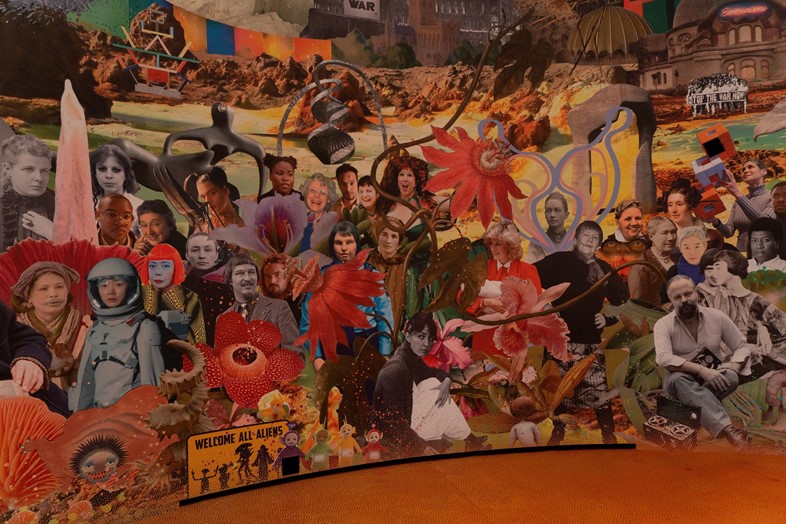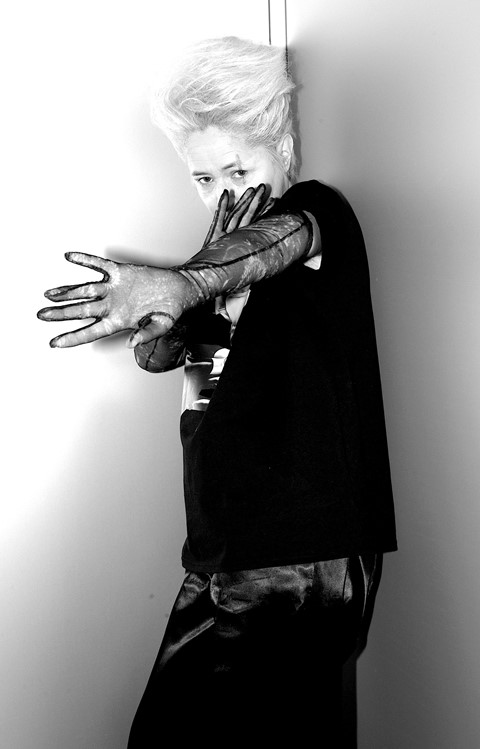As her new solo exhibition opens at London’s Serpentine gallery, Dominique Gonzalez-Foerster discusses the political power of aliens and science fiction
“I’m welcoming everyone into our spaceship,” says Dominique Gonzalez-Foerster on the opening morning of her new show, Alienarium 5, at the Serpentine South Gallery in Hyde Park. Eccentric, humorous and playful at turns, the French artist’s exhibition is pitted as a “speculative environment that invites us to imagine possible encounters with extraterrestrials” – although here, the concept of the ‘alien’ is a stand-in for far more serious sociopolitical concerns. “We can connect it to the extraterrestrial, but we can also connect it to the migrant, the refugee, and all our resistance to otherness,” she explains. “It helps to bring it in this sci-fi context, but that’s not the only meaning.”
Gonzalez-Foerster’s interest in science fiction first began as a result of her father’s love of the genre. “I was very bored by literature describing heteronormative life – affairs, betrayals, family,” she says. “I always thought that the incredible thing about science fiction is that it explores not only the relation to science and space, but all possible ways of being. As a child, this was very appealing to me.” Her formative interactions with sci-fi started with Richard Fleischer’s 1973 dystopian film Soylent Green, the novels of Philip K Dick – “as an early teenager, those really massaged my brain” – and even Tove Jansson’s beloved Moomin books. “This is something I didn’t know as a child, but Tove Jansson was a lesbian, and for her, the whole Moomin family ... as a child, you can see there’s the idea of the expanded family and there’s all these different beings,” says Gonzalez-Foerster.

The central piece of the exhibition – a high-ceilinged, circular room with a 360-degree space-age mural titled Metapanorama – features figures as diverse as Arca, Yayoi Kusama, Princess Diana and the Teletubbies in an imaginary, collaged cosmos. “Very often, you’d have this giant fresco with important men, but this is to rewrite the story differently,” she says. All the images in the collage were sourced online, which leads Gonzalez-Foerster to wax lyrical about the infinite possibilities of the internet. “The fact that you can travel from a portrait to a text to a place and combine all that – that’s the book we've all been looking for,” she says. “I have a fantasy of the internet as a living book.”
Elsewhere in the exhibition, there is a hypnotic, soothing VR experience that is like a cross between being underwater and in space, and a sumptuous velvet round ‘bed’ for sleeping on next door. Outside, a squiggly pink and yellow sculpture conceived by the artist with pioneering trans philosopher Paul B Preciado stands in the park amongst the greenery. The exhibition text refers to it as a ‘queering‘ of Le Corbusier’s 1946 human figure scale The Modulor, which is based on the height of a man with his arm raised – In remembrance of the coming alien (Alienor), on the other hand, appears like a pair of ovaries, or the chambers of a human heart. “There have been all these discussions in the past two years about some statues representing colonisation or patriarchy, that have been thrown down,” says Gonzalez-Foerster. “This is about bringing in new possible versions of the idea of a statue.”
Science fiction, this exhibition seems to say, offers an alternative to the usual, accepted modes of being in today’s world. “Part of the reason sci-fi and speculative fiction exists is as a laboratory for exploring multiple identities,” explains Gonzalez-Foerster. “Multiple relationships to gender, sex, to all sorts of possible liberations and revolutions.”
Dominique Gonzalez-Foerster: Alienarium 5 is at the Serpentine South Gallery in London until September 4.
